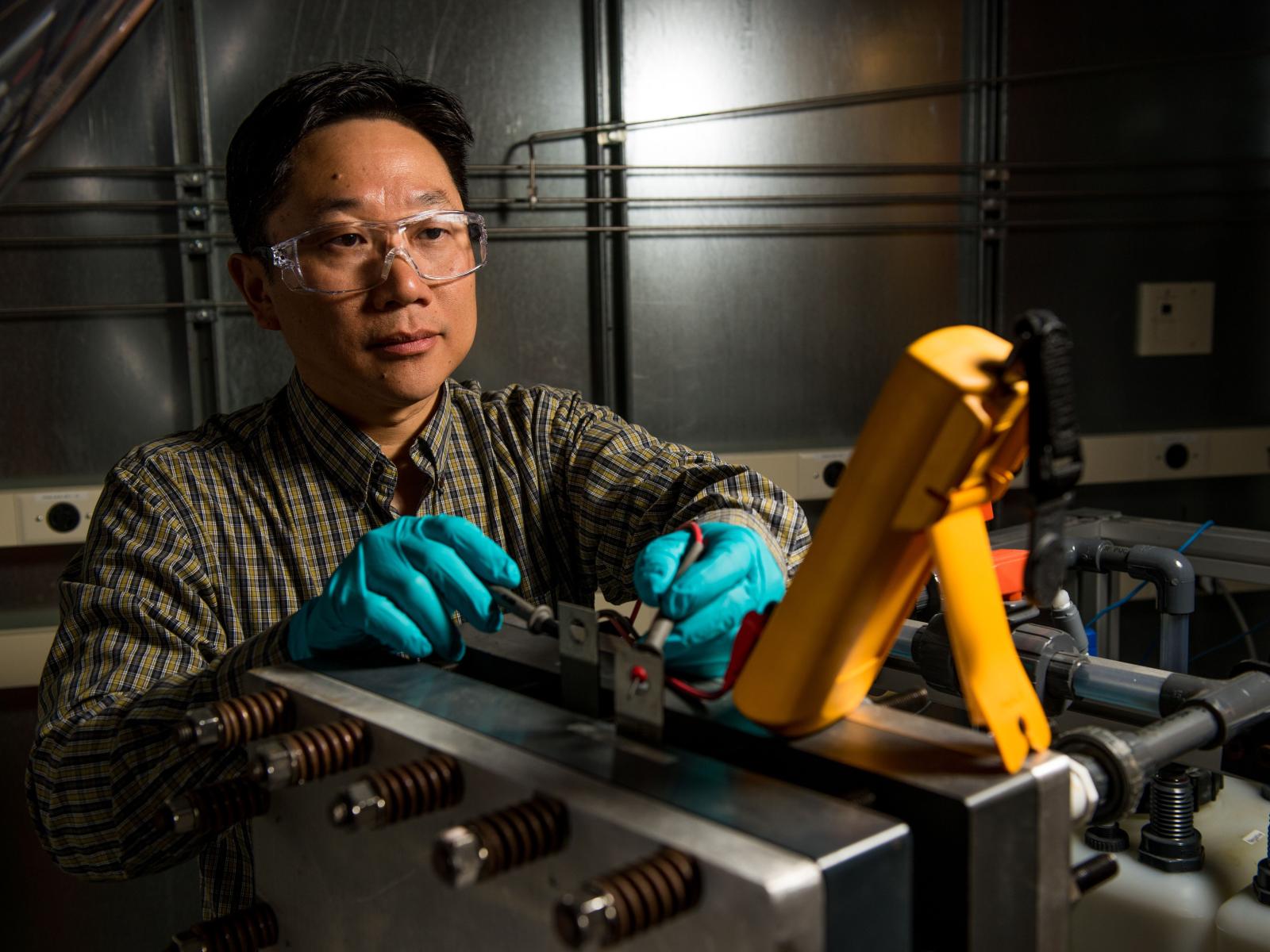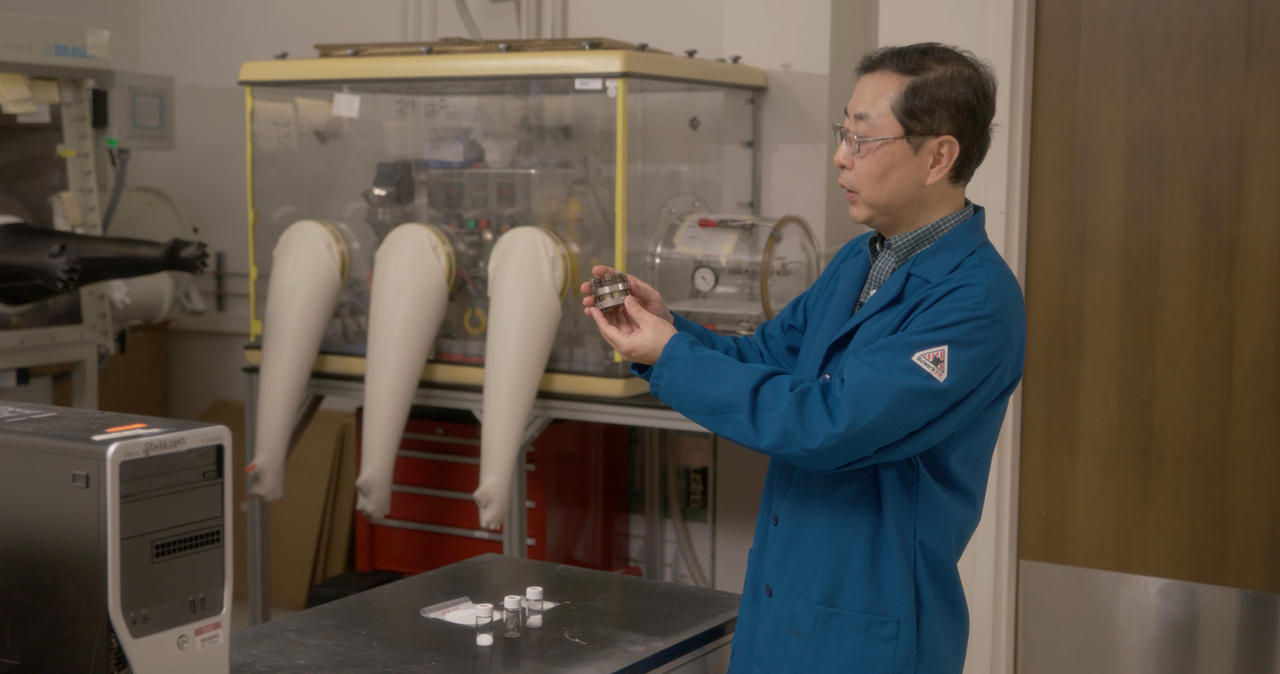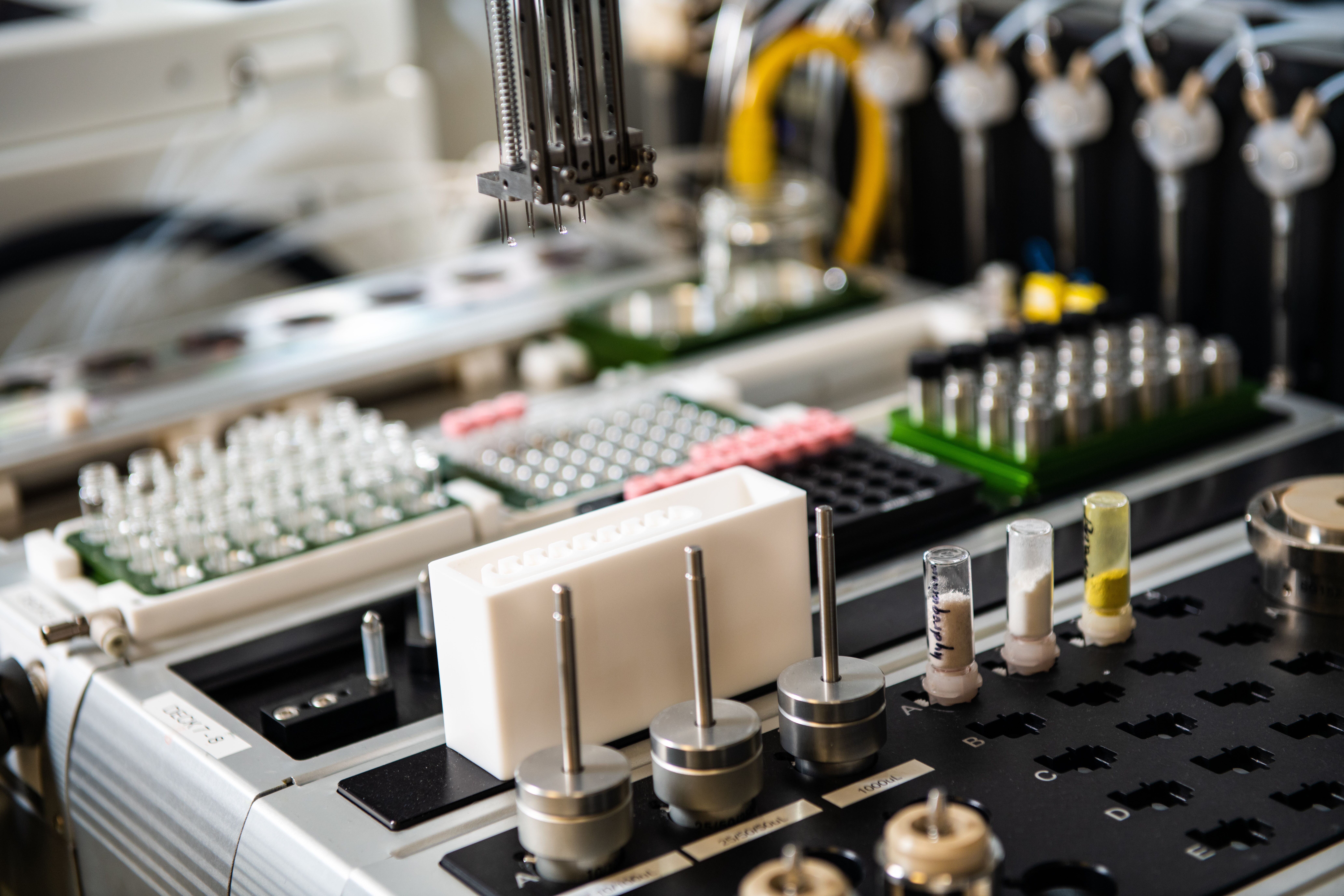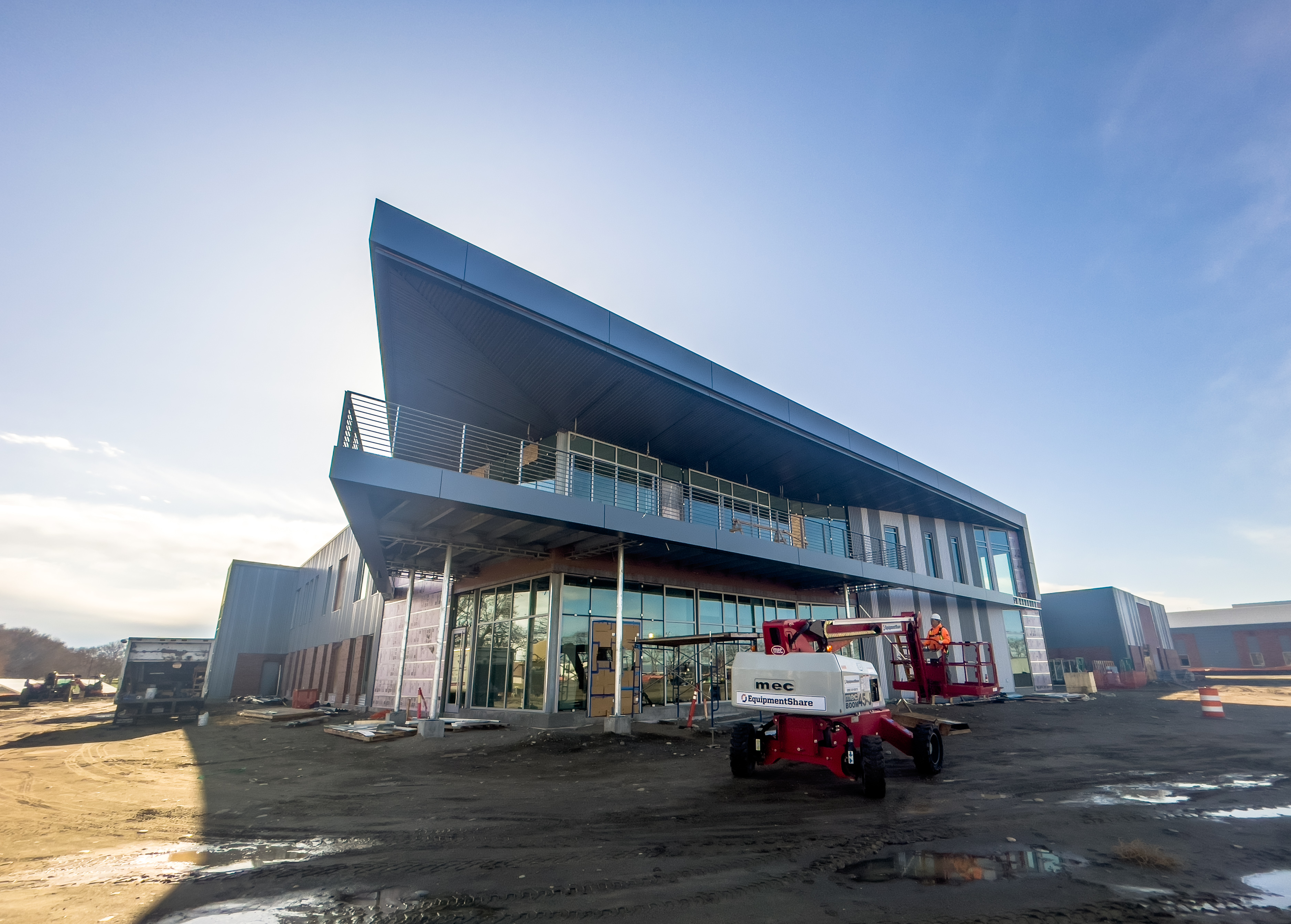Advancing Energy Storage for a Clean Energy Future

Materials scientist Wei Wang and his colleagues at PNNL are helping to advance the development of batteries for the electric grid.
(Photo by Andrea Starr | Pacific Northwest National Laboratory)
As the nation and individual states commit to replacing greenhouse-gas-generating fossil fuels with cleaner alternatives, some practical and technical challenges come to the fore. Among the most difficult is ensuring that reliable, affordable and resilient energy is available when and where it is needed.
Researchers at the Department of Energy’s Pacific Northwest National Laboratory are helping to address this challenge by studying energy transition scenarios. For example, in a recent study, they looked at paths for California to achieve its ambitious goal of 100 percent clean electricity generation by 2045. They found significant mismatches between when electricity could be generated and when it is consumed—and offered insights into how long-duration energy storage could close those gaps.

The study demonstrated the benefits of adopting two distinct forms of long-duration energy storage. One focuses on 10–20 hours of storage to manage day and night fluctuations between generation surpluses and deficits. The other considers durations of weeks or months to weather seasonal variation in supply and demand.
In the California model, for example, there was excess generation during the day and a shortfall after sundown. Annually, there were net surpluses of generation from mid-February to early August when energy could be stored to counter net deficits through the start of the next year. Unfortunately, today’s business models provide economic benefit only when stored energy is used—encouraging frequent discharge and recharge cycles rather than saving energy for longer durations.
By adopting a diurnal and seasonal view of energy storage needs and looking at historical usage data, utility and grid operators can develop a better picture of when they will need to bridge gaps between generation and loads—and for how long. This, in turn, can help drive investment decisions and technology development timelines to meet industry’s shortening planning and procurement cycles.

Speaking of technology development, PNNL brings together fundamental scientists with end-use domain experts to advance technical breakthroughs related to energy storage that will support a clean, resilient electric grid. For instance, our researchers showed a new battery design using inexpensive and abundant metals—sodium and aluminum—could charge and discharge much faster than conventional high-temperature sodium batteries and operate at a lower temperature.
PNNL’s advancements here center on two separate reactions, the second of which helps increase the battery’s capacity. Early results show 83 percent of peak charge capacity remaining after 345 charge and discharge cycles. Further, our researchers developed a flat, stackable design for these batteries that would make it easier for large-scale deployment than today’s tubular shape.
In another effort, our researchers are using machine learning techniques to help identify the best materials for aqueous organic redox flow batteries—another type of battery for grid-scale energy storage. To increase the energy that can be stored in these promising batteries, researchers need to better understand the molecular structure and properties of the constituent materials, specifically, how well certain molecules dissolve in water.
Toward this end, PNNL researchers built a comprehensive, organic molecular database that is available to the scientific community. Their database includes about 12,000 molecules that can be used to train machine learning models, while other open-source databases have only a few hundred molecules that are more relevant to designing drugs than batteries.

As a critical step toward deployment, the capabilities of our new Grid Storage Launchpad will help test and validate battery technologies in realistic operating conditions. This facility, funded by DOE’s Office of Electricity, will also facilitate collaborations with academia and industry and advance workforce development.
While the setting sun and changing of seasons may make us think of the passing of time, know too that researchers at PNNL are among those helping our grid weather these changes—and paving the way to a decarbonized energy future.
Steven Ashby, director of Pacific Northwest National Laboratory, writes this column monthly. To read previous Director's Columns, please visit our Director's Column Archive.
Published: June 26, 2023